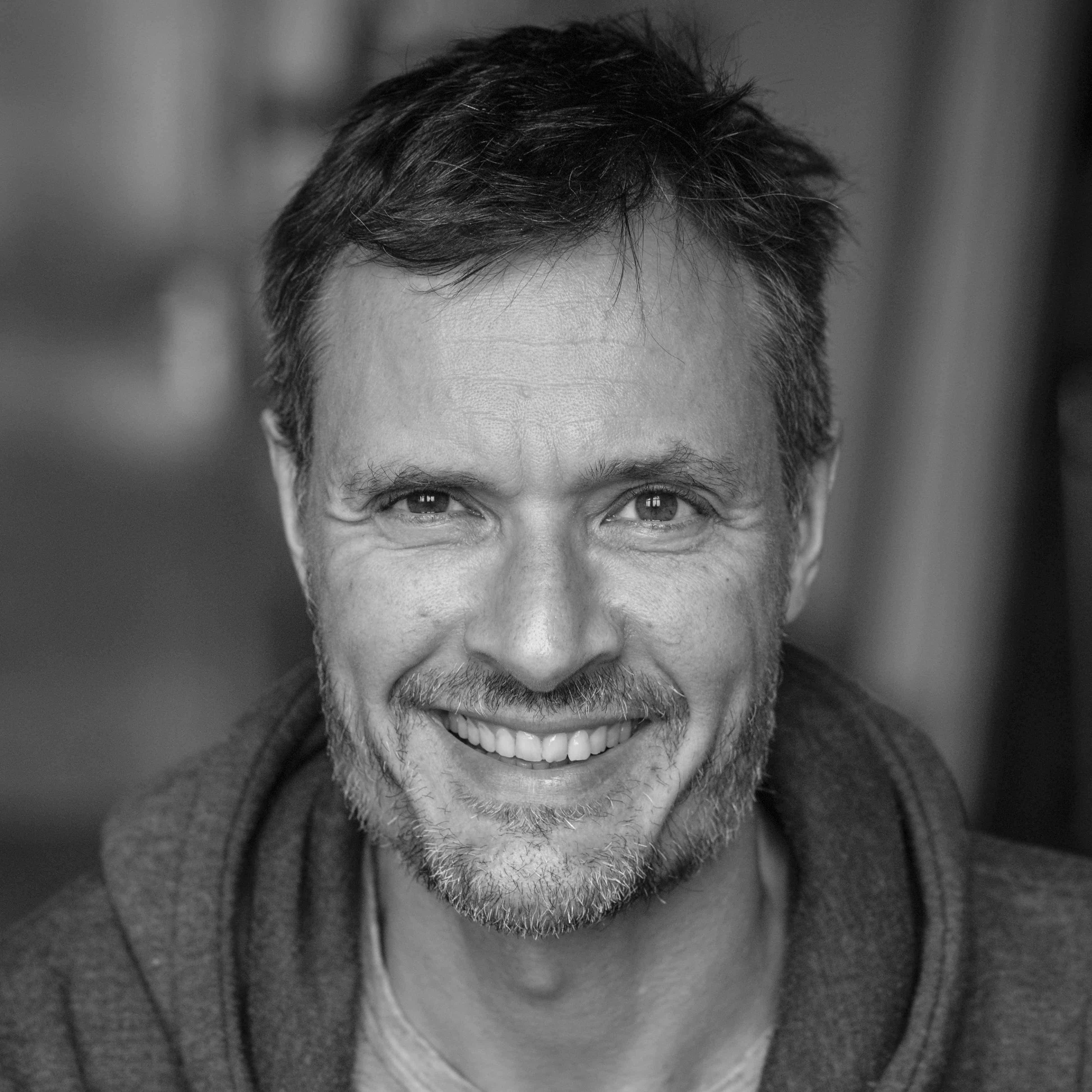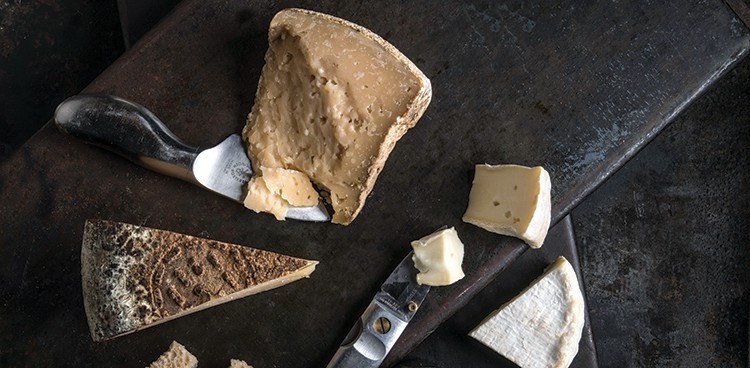
New Amsterdam is featured in our Spring 2017 issue.
Creamy rounds of Gouda and Edam encased in shiny red and yellow wax coatings—such are the lactic symbols of Holland. While these traditional cheeses account for 75 percent of the roughly 1.1 million pounds Holland produces each year, it’s the other 25 percent of Dutch curds, which range from nutty farmstead wheels to soft-ripened disks, that are truly swoon-worthy. But you’ll have to go to Holland for the pleasure: There are hardly enough of these handmade cheeses to go around in the small country, where per capita annual consumption is about 40 pounds.
So what inspired these new creations? In 1984, the European Economic Community (EEC; also called the European Common Market) put a quota on Dutch production of cow’s milk, which limited how much milk could be processed per animal. While large dairy farms were able to buy more bovines to maintain output, smaller farmers had to get creative. Many turned to crafting out-of-the-ordinary artisan cheeses for the discerning Dutch public.
Another boon to this new wave of cheese culture in the Netherlands: France. Many Dutch makers looked south before launching their businesses, either traveling to the country to learn directly from experts, or staying put and studying French techniques at home. This doesn’t mean that artisanal producers in Holland are turning out French taste-alikes, though. They’re simply smart entrepreneurs, taking inspiration from others and using it to create their own distinctively Dutch offerings.
Reinventing the Wheel
Jan Dirk van de Voort of De Groote Voort farm in Lunteren is widely considered the king of Dutch artisan cheese—and he’s got the credentials to back it up. Not only is van de Voort an eighth-generation farmer, but his father introduced Jersey cows to Holland in 1976 after falling in love with the breed during a six-month work stint in the United States. When van de Voort took over De Groote Voort, the family was still sending its rich milk to the cheesemaking cooperative daily. It didn’t take long for van de Voort to realize he wanted to do more, so he began producing traditional Gouda in 1981.
Two decades later, though, something was wrong. “My cows would get sick, we’d treat them with antibiotics, and they’d get better, but the next year they’d get sick again,” he says. Van de Voort and his wife, Irene, stopped using antibiotics and removing calves’ horns after birth and switched feed to an herb- and mineral-laced organic mixture grown on their property. Following this spirit of change, the family began crafting large, flat wheels of natural-rind cheese—calling it Remeker—instead of Gouda.

Olde Remeker
While these adjustments paid off in the long run and ultimately improved the milk’s flavor, they were risky. The farm lost a lot of calves that were too weak to survive without medication and production dropped by 25 percent. “We almost went broke,” van de Voort says.
They persisted, however, by raising the price of Remeker, and emerged a huge success. In 2016, Reed Business Information—a magazine publisher in the Netherlands—recognized the van de Voort family, including son, Peter, as the Agricultural Entrepreneur of the Year, a title typically bestowed on big corporations.
A Terroir Tale

Brandrode Rund
“Let me show you why our cheeses are so good,” van de Voort says, leading me to where his 90 Jerseys—the “horned ladies”—graze. He drops to his knees and scoops up a chunk of earth. “There’s probably no other pasture as rich and deep as this anywhere else in Holland,” he says, pointing to the stratifications of sand mixed with soil.
It’s not every day that a cheesemaker shows you a square of wormy dirt to explain the quality of his cheeses, but van de Voort’s focus on land has made him into something of an international star. In fact, he shares his agricultural practices with dairy farmers and students from around the world.
The latest innovation at De Groote Voort farm concerns its cheese rub: homemade clarified butter. “We want the outside to taste as good as the inside,” van de Voort says, patting a fat round the way one would a baby’s bottom. “It’s much more work, but it completely changes our cheeses and our customers love it.”
Down the road from De Groote Voort is another cutting-edge cheesemaker, Michiel Cassuto. Cassuto always wanted dairy cattle, but when he graduated from agriculture school in 1984, he couldn’t afford to purchase enough animals to make milking worthwhile under the EEC quota. Undeterred, Cassuto bought goats to pursue his cheesemaking dreams. In 2001 the quota system was abolished and Cassuto got his cows, selecting an heirloom Dutch breed called Brandrode Rund. “They’re social, sturdy, and their milk is perfect for the kind of cheese I wanted to make,” he says.
Cassuto creates just one variety—named after his breed of choice—aged six, 12, or 18 months, depending on the wheel. That his Brandrode Rund is similar to French Beaufort is not surprising—Cassuto apprenticed in Savoie with Beaufort artisans and he utilizes a copper vat acquired during his time abroad.
Beyond Bovines
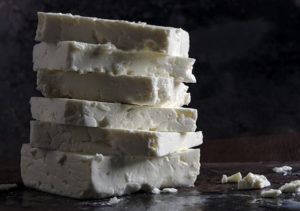
Skeapswit
Closer to Amsterdam, in a region called Waterland, is historical Dikhoeve farm. When the Kuiper family obtained the property in 1740, both cows and sheep were common in the region. As time passed, though, bovines became more popular. The Kuipers stayed on-trend and churned out cow’s milk Gouda for generations, but when the EEC milk quota was instituted, Wilhelm Kuiper—who now owns the farm with his son, Alexander—turned to sheep.
“I wanted to find a different niche in the market,” Kuiper says. “We’ve been on the farm for 300 years; I knew there had been sheep here. It made sense to bring them back.”
Kuiper chose Fries-Zeeuwse, a robust heirloom breed, and began making both firm and soft sheep’s milk cheeses in 2003. Ten years later, Kuiper hired Michael Steeghs—a curd-crazy geologist who studied with famed French affineur Hervé Mons—as an apprentice. It was Steeghs who encouraged Kuiper to break the mold even further and focus on soft cheese.
“We’re on a farm below sea level; we’re near Amsterdam,” Steeghs says. “Making mountain-style cheeses is ludicrous.”
Dikhoeve currently produces a half-dozen cheeses, most of which are bloomy rinds made with organic milk. In addition to sheep’s milk cheese, the team also crafts a few cow’s milk wheels.
In the northern village of Jubbega, Doetie Trinks also embraced her roots when deciding make cheese. “I grew up on a farm, but my parents discouraged me [from following in their footsteps],” she says. “I became a medical technician instead.” After working at a London laboratory, Trinks realized she was unhappy—so she quit her job, packed her bags, and returned to Holland. In 2010, she bought an old farm in Eastern Friesland with her partner, Barend Put, invested in Toggenburg goats (“They’re so friendly and hardy,” she says), and started making organic cheese.
Like Kuiper, Trinks drew inspiration from predecessors when launching her business. “Michiel [Cassuto of Bran-drood Kaas] is my guru,” she says. “I go my own way, but I learned everything from him.”
Today Trinks makes two distinct types of cheese: one small, soft, and young, and the other round, hard, and aged. Within these categories are plain and ashed varieties ranging from four ounces to three pounds. The hard wheels are aged up to one year in a basement cave—a low-ceilinged space accessed by a kitchen stairwell.
Trinks does it all: She milks the goats, rakes the animals’ feed, and stirs, drains, and forms cheeses. She wouldn’t have it any other way. “I’ve found my place,” she says.
If At First You Don’t Succeed, Keep Making Cheese
A half-hour drive from Trinks’ farm, near Zevenhuizen, lives a Dutch maestro of organic goat cheese. Hanneke Kuppens has been crafting small rounds of creamy, French-style chèvre in Holland since 1988, blazing a trail for fellow innovators.
“I was a quiet city girl,” she says. “But after studying biodynamic agriculture in college and working on a farm in France, I realized I wanted to raise animals and make goat cheese like [those] I’d tasted in France.” When Kuppens asked to borrow money to start a farm, though, the bank denied her. “A woman who wanted to raise goats and make organic cheese? The bank said no,” she says, with a wry smile. Nonplussed, Kuppens took a number of odd jobs to support her fledgling rental farm.
“I was scared to sell my cheeses at first because no one knew them,” she says. “I literally went door to door.” Little by little, Kuppens created a market, and these days she can’t keep up with demand. “I have so many people who want my cheeses that I have to carefully choose who I sell them to,” she says.
Kuppens still works alone, growing organic feed for 40 Alpine goats, milking the animals, and making all her De Oude Streek cheeses by hand. “I do get some help with the feed,” she says, laughing while opening a barn door to reveal crates filled with fruits, vegetables, and bread. “An organic produce distributor gives me what can’t be sold, and I feed it to the goats, along with the grasses I [grow]. That’s why their milk is so sweet.”
Kuppens’ signature wheel is Machedoux, a tender, Camembert-like cheese that took 10 years to perfect. “I could sell twice as much of it,” she says, “but I’m happy with the way things are now.”
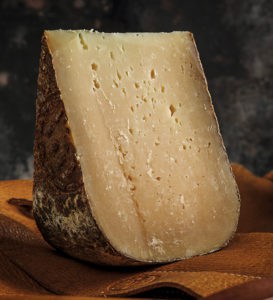
Kobunder Rinse Schapenkaas
Not all artisanal Dutch cheesemakers have a hand in every step of the process, however. Martin Schyns, a quality control worker, tinkered with wheels at home for years before quitting his job to pursue the craft full-time. But Schyns doesn’t own a single animal or a cheesemaking facility. Instead, he buys organic milk directly from producers and rents time at a renovated antique dairy in historic Veenhuizen, a hamlet in central Friesland.
While Schyns refers to his cheeses—sold under the Kobunder brand—as Gouda styles, the resemblance stops with their shape. Instead of sticking solely with cow’s milk, Schyns also ripens his sheep, goat, and mixed-milk rounds in a historic peat barn originally used for storing potatoes. He rubs some of these cheeses with traditional appelstroop, Dutch apple syrup. “It encourages fermentation and helps protect the cheeses from mites and contamination,” Schyns says. “I’m just doing what people did before me.”
Lacking a farm doesn’t mean full freedom, though. Dutch law dictates that any cheesemaker who buys milk must pasteurize it, too, which frustrates Schyns. To bypass the regulation, he makes his few raw-milk cheeses on the farm of one of his milk suppliers. “[Raw-milk cheeses are] what I really love,” he says. “But I’m just happy I get to make cheese.”
Tasting Notes
OLDE REMEKER
De Groote Voort
Cheesemaker: Jan Dirk van de Voort
Lunteren, Netherlands
Raw cow’s milk
This one-year-old wheel is reminiscent of clothbound cheddar: bursting with amino acid crystals and boasting a slight walnut flavor.
REMEKER PRACHT
De Groote Voort
Cheesemaker: Jan Dirk van de Voort
Lunteren, Netherlands
Raw cow’s milk
This cheese’s name—pracht means “glory” in Dutch—is fitting. Richly lactic, aged, and grainy, akin to Parmigiano, it melts in the mouth.
BRANDRODE RUND
Brandrood Kaas
Cheesemaker: Michiel Cassuto
Ede, Netherlands
Raw cow’s milk
Impeccably balanced in both flavor and texture, this cheese is quite mild when young with an elastic texture and rich cream aftertaste. As it ages, sweet, nutty notes emerge with hints of brown butter.

Skeapsrond
SKEAPSROND
Dikhoeve
Cheesemaker: Wilhelm Kuiper
Ransdorp, Netherlands
Pasteurized sheep’s milk
This young, bloomy rind presents a delicate, creamy flavor that finishes with a mellow tang.
SKEAPSWIT
Dikhoeve
Cheesemaker: Wilhelm Kuiper
Ransdorp, Netherlands
Pasteurized sheep’s milk
Decadently rich and milky, this feta-like hunk is aged in sea-salt brine and harbors light sheepy notes.
LYTSE WITE
Doetie’s Geiten
Cheesemaker: Doetie Trinks
Jubbega, Netherlands
Raw goat’s milk
Small, fresh, and delightfully wobbly, Lytse Wite makes a beautiful substitute for butter on morning toast.
TÛNE POER
Doetie’s Geiten
Cheesemaker: Doetie Trinks
Jubbega, Netherlands
Raw goat’s milk
This firm wedge is straight-up goat goodness with subtle hints of prairie grass in the background.
MACHEMAT
De Oude Streek
Cheesemaker: Hanneke Kuppens
Zevenhuizen, Netherlands
Raw goat’s milk
Modeled after mushroomy Brie de Melun, this cheese is big on flavor: Brown butter notes abound on the palate.
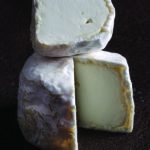
Machetin
MACHETIN
De Oude Streek
Cheesemaker: Hanneke Kuppens
Zevenhuizen, Netherlands
Raw goat’s milk
Pure mineral, goat flavors sans tartness in a tiny, delicate package.
KOBUNDER RINSE GEIT
Kobunder Kaas
Cheesemaker: Martin Schyns
Lippenhuizen, Netherlands
Pasteurized goat’s milk
Rubbed with apple syrup, this mild, milky cheese bears notes of wheat and caramelized sugar.
KOBUNDER RINSE SCHAPENKAAS
Kobunder Kaas
Cheesemaker: Martin Schyns
Lippenhuizen, Netherlands
Pasteurized sheep’s milk
Firm yet creamy, studded with protein crystals, and honey-sweet, this pale-gold round recalls Alpine styles.


